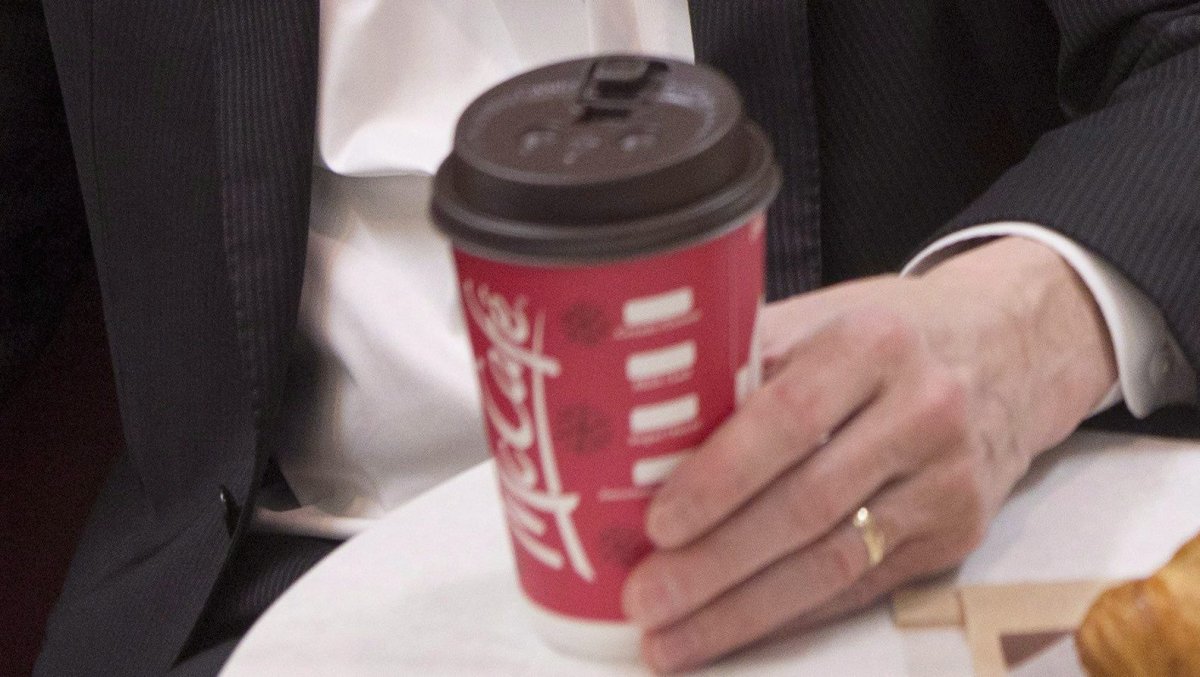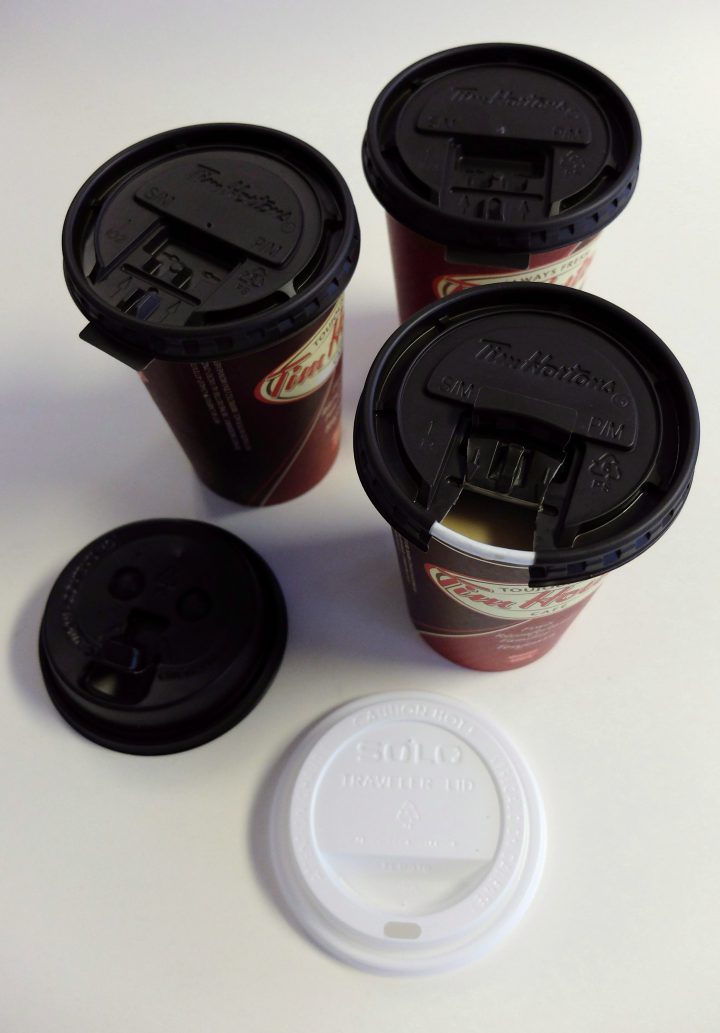It’s a feeling many Tim Hortons customers know all too well.

You’re walking down the street, double-double in hand, when a hot drop of coffee dribbles out from under the edge of the lid, spilling sticky brown liquid over your fingers. You probably didn’t even peel back the lid yet for a sip, and you’ve already got coffee on you.
That’s one of the annoyances Tim Hortons and its parent company, Restaurant Brands International, are aiming to tackle with a new lid design they’re trying out at select stores. The test lid is similar to the raised lid currently used for Tim Hortons’ lattes. However, it also features a few new elements, such as an indented maple leaf on the top and a flip-back cover for the spout.
The lid is on trial at six stores, and might still be modified before it’s rolled out widely.
WATCH BELOW: Tim Hortons introduced all-day breakfast in Canada

The proposed lid would replace Tim Hortons’ existing design, which features a flat lid and a perforated tab that must be peeled back before drinking. Tim’s has been using the old flat-lid design for the past 20 years.
Alex Macedo, president of Tim Hortons, says the lid redesign is part of a larger rebranding effort to make the restaurant more environmentally friendly and appealing to today’s customers.
“If we don’t make these adjustments, we fall back in time,” he told The Canadian Press this week.
He says the changes are a response to years of complaints about leaks and spills. Testers have already run up thousands of stairs and driven many miles to test out the proposed lids, he says.
“The only people who are going to be pissed off are dry cleaners and car-washing companies. They will wash fewer shirts and fewer cars,” Macedo said.
Many of Tim Hortons’ coffee competitors, including McDonald’s, have already tossed the flat-top design for the raised lid.
Scott Specht, an architect and co-author of the book Coffee Lids, says raised lids have become the dominant design in today’s industry.
Specht and his co-author, architect Louise Harpman, delved into the long design history behind the throwaway tops. They found that raised lids are only slightly more expensive to make — and much sturdier — than flat lids. They also allow for more creative designs, such as Tim Hortons’ proposed maple leaf.
“Pretty much everyone now is raised, except for the least expensive places,” Specht said.
As for Tim Hortons’ leaking problem, Specht says such issues are caused by a bad fit around the rim, combined with a flat lid that leaves little room for coffee to slosh around.
Tim Hortons says it’s also looking at tinkering with the way it serves its doughnuts, which can stick to the inside of the takeout bags.
WATCH BELOW: Young girls fight off alleged abductor by throwing coffee at him

The company has announced a slew of changes in recent months, from redesigning its stores to rolling out all-day breakfast and high-tech ordering kiosks.
It’s all part of an effort to boost its public perception in the wake of several cost-cutting measures and feuds with franchisees, some of whom have launched lawsuits against the parent company, RBI.
Those struggles have hurt the perceptions of the company, according to the latest Gustavson Brand Trust Index. The annual ranking, which was released in May, shows the coffee chain tumbled from fourth place last year to No. 203 in 2018.
“Pretty much all of that happened this year because around the time of the survey there was a big scandal over Tim Hortons mistreating its employees,” lead researcher David Dunn, a professor at the University of Victoria, told Global News at the time.
Tim Hortons also tanked in the Leger research group’s annual brand reputation survey, which was published in April. The brand fell to No. 50 on the list, down from fourth in 2017.
Macedo says Tim Hortons and RBI are eager to improve their reputation.
“We think it is not wise to drag the brand through the mud in the public eye because there are 1,500 families that depend on the brand to make a living,” he said.
— With files from The Canadian Press and Global News reporter Dennis Arellano






Comments